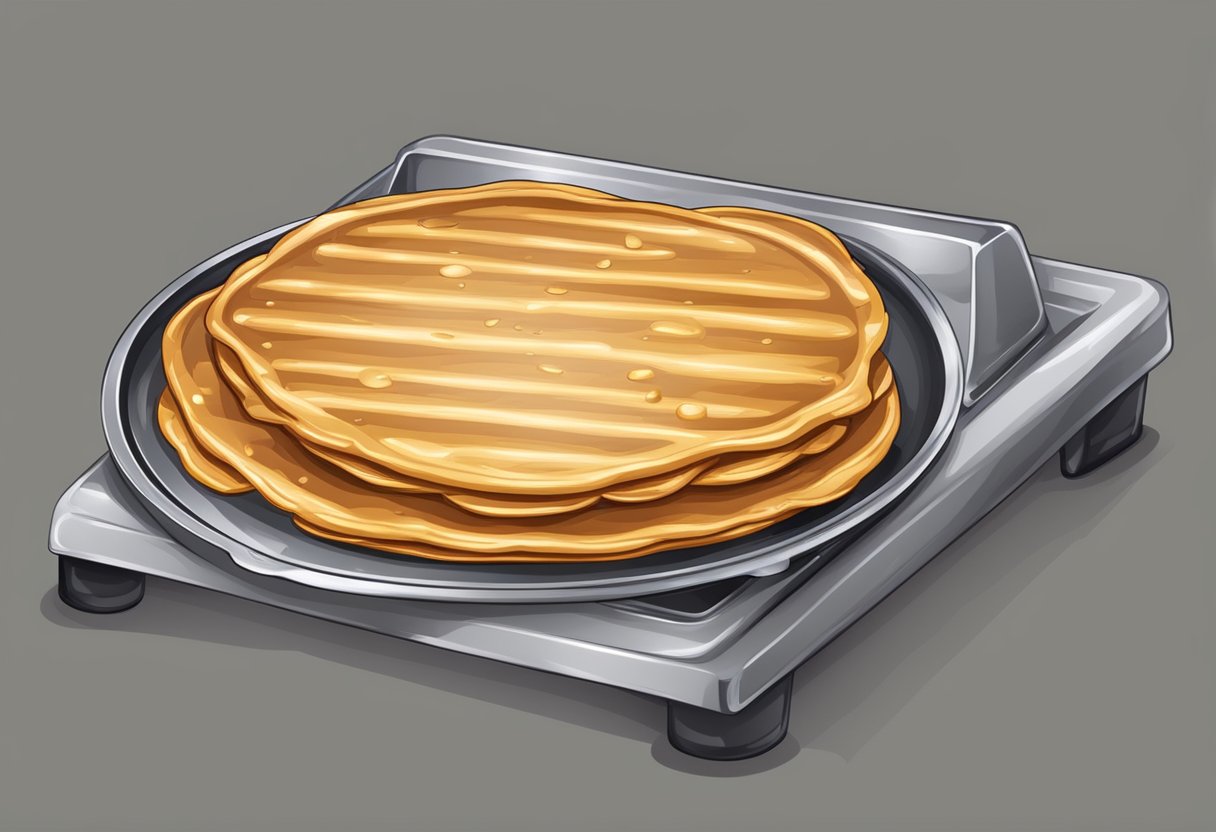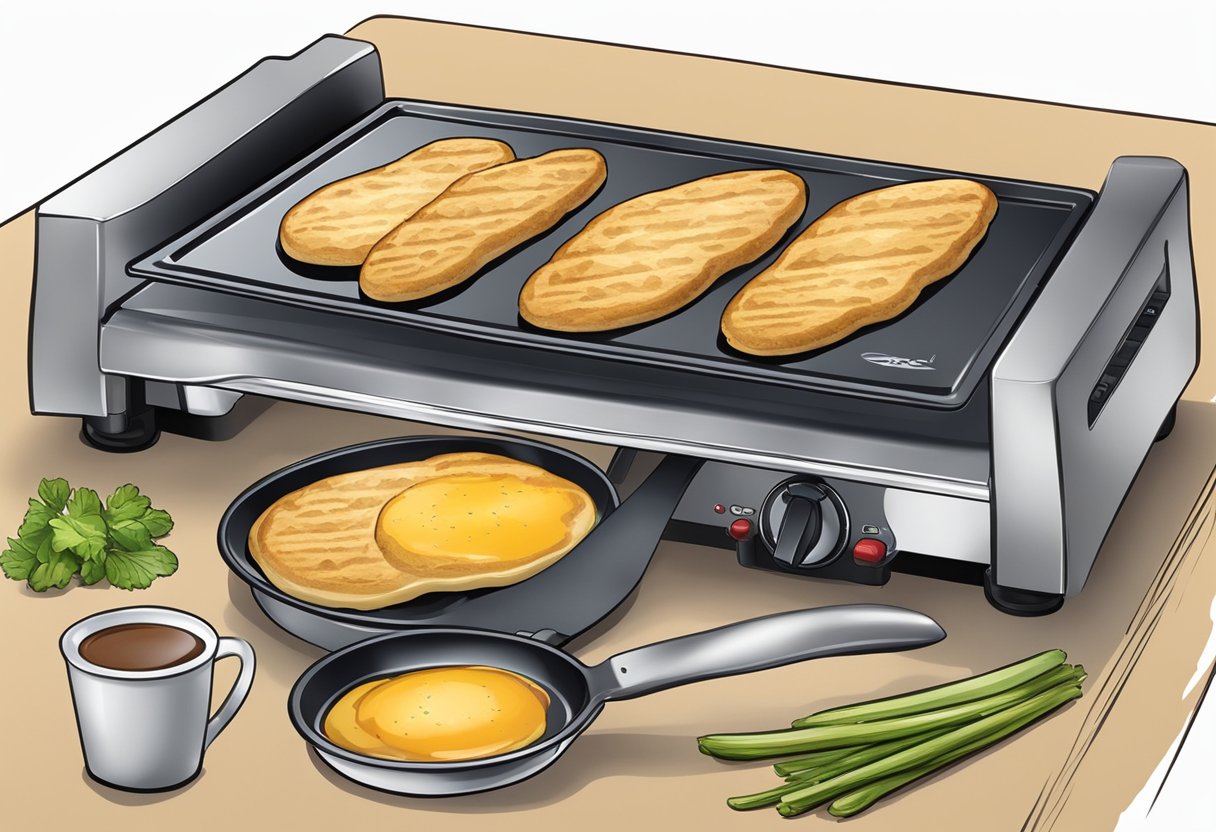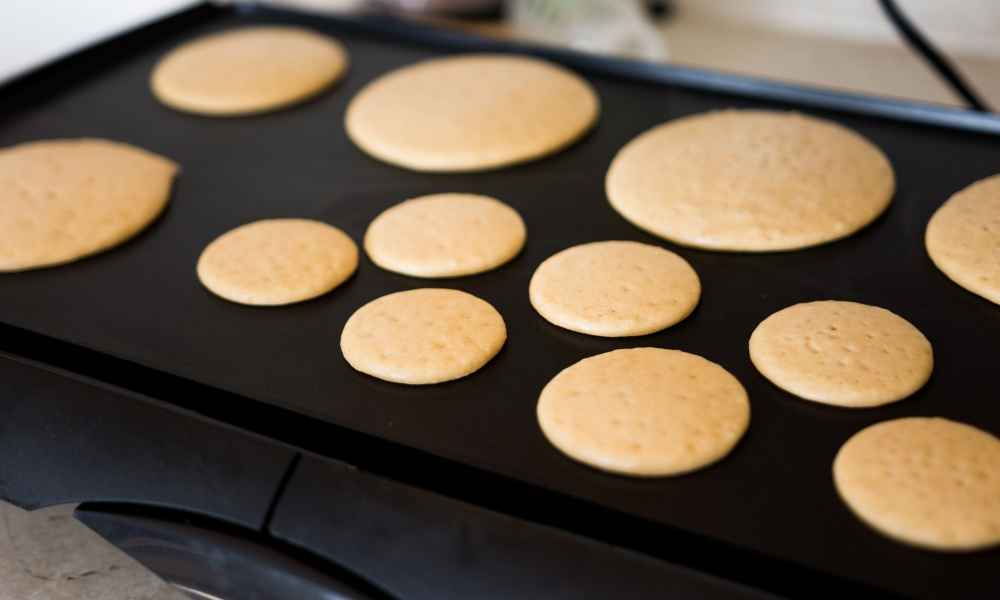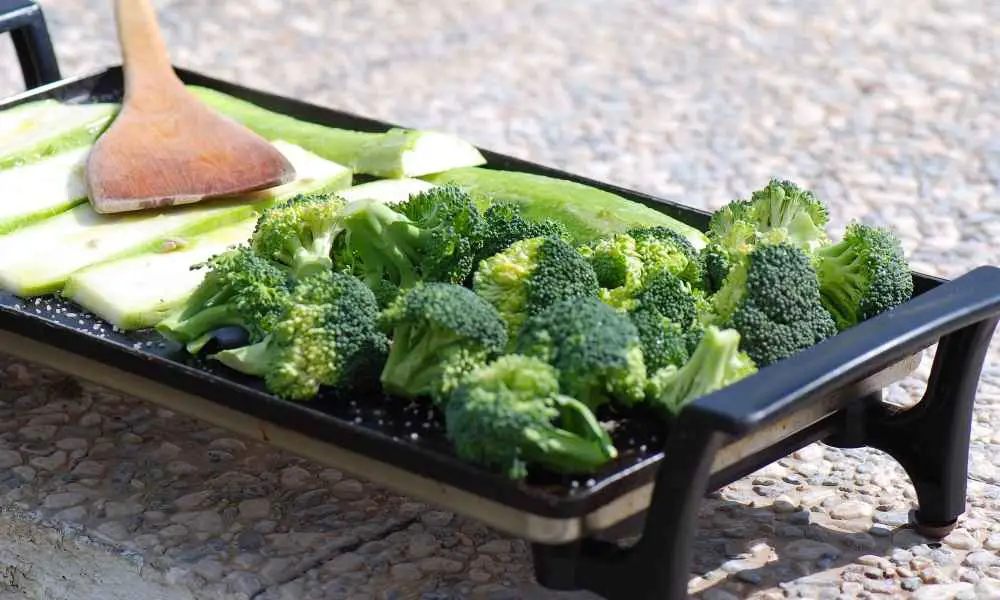If you’ve recently seasoned your griddle, you may be wondering why it’s still sticky. A properly seasoned griddle should have a smooth, non-stick surface, but sometimes things don’t go as planned. There are several reasons why your griddle might be sticky after seasoning, but don’t worry, there are solutions to correct it.

One of the most common reasons for a sticky griddle is that there is too much oil on the cooking surface. A properly seasoned griddle has a very thin layer of oil applied that burns into the surface to create a permanent, hard, non-stick surface. If you applied too much oil during the seasoning process, it can create a gummy texture that is difficult to cook on.
Another reason your griddle might be sticky is that the oil you used to season it has gone bad. Oil can go rancid over time, and if you used old oil to season your griddle, it can leave a sticky residue on the surface. In this case, you’ll need to clean your griddle thoroughly and start the seasoning process over again with fresh oil.
Understanding Griddle Seasoning
https://www.youtube.com/watch?v=RvEBaKZ8W-U&embed=true
Importance of Seasoning
Seasoning your griddle is an essential step to ensure that it is non-stick and easy to clean. It involves coating the surface of the griddle with oil and heating it to a high temperature, which causes the oil to polymerize and create a protective layer. This layer prevents food from sticking to the surface and also protects the griddle from rust and corrosion.
Proper seasoning is crucial to the performance of your griddle. A well-seasoned griddle will provide even heat distribution, prevent food from sticking, and make cleaning up a breeze. On the other hand, a poorly seasoned griddle will result in uneven cooking, food sticking to the surface, and difficulty in cleaning.
Proper Techniques for Seasoning
There are several techniques for seasoning a griddle, but the most common method is the oil seasoning method. Here are the steps for oil seasoning your griddle:
- Clean the griddle surface thoroughly with soap and water and dry it completely.
- Apply a thin layer of high-smoke point oil such as vegetable oil or flaxseed oil to the surface of the griddle. Use a paper towel to spread the oil evenly.
- Heat the griddle to a high temperature, around 400-450°F. You can do this on a stovetop or in the oven.
- Let the griddle heat up for around 20-30 minutes, or until the oil begins to smoke.
- Turn off the heat and let the griddle cool down completely.
- Repeat the process of applying oil and heating the griddle 2-3 times until the surface becomes glossy and non-stick.
It is important to note that seasoning is not a one-time process. You should season your griddle regularly, especially after each use. This will help maintain the protective layer and ensure that your griddle stays non-stick.
In conclusion, seasoning your griddle is a crucial step to ensure that it performs at its best. By following the proper techniques for seasoning, you can enjoy even cooking, easy cleaning, and non-stick performance from your griddle.
Why Your Griddle Is Sticky After Seasoning
https://www.youtube.com/watch?v=fyKWTKKSQoM&embed=true
If your griddle is sticky after seasoning, don’t worry, it’s a common problem. There are a few reasons why your griddle might be sticky, and we’ll go over them in this section.
Over-Seasoning
One possible reason for a sticky griddle is over-seasoning. Over-seasoning occurs when you apply too much oil to the griddle during the seasoning process. When you season your griddle, it’s important to apply a thin layer of oil to the surface. If you apply too much oil, it can create a thick layer that won’t burn off during seasoning. This excess oil can become sticky and make cooking difficult on your griddle.
To avoid over-seasoning, make sure you’re applying a thin layer of oil to your griddle. You can use a paper towel or a brush to apply the oil. If you accidentally apply too much oil, you can try wiping it off with a clean paper towel.
Incorrect Temperature
Another reason why your griddle might be sticky after seasoning is that you’re not using the correct temperature. When you’re seasoning your griddle, you need to make sure that you’re using the correct temperature. If the temperature is too low, the oil won’t bond to the surface of the griddle properly, and you’ll end up with a sticky surface.
To avoid this problem, make sure you’re following the manufacturer’s instructions for seasoning your griddle. They should provide you with the correct temperature to use. If you’re not sure, you can try using a temperature of around 400°F.
Wrong Type of Oil
The type of oil you use to season your griddle can also affect whether it becomes sticky or not. Some oils, such as vegetable oil, can become sticky when they’re heated. This can make your griddle sticky and difficult to cook on.
To avoid this problem, try using an oil that has a high smoke point, such as canola oil or grapeseed oil. These oils are less likely to become sticky when they’re heated.
In summary, if your griddle is sticky after seasoning, it’s likely due to over-seasoning, incorrect temperature, or the wrong type of oil. By following these tips, you can avoid a sticky griddle and enjoy cooking delicious meals on your non-stick surface.
How to Fix a Sticky Griddle
https://www.youtube.com/watch?v=HXigQPGIyPU&embed=true
If you’ve seasoned your griddle and it’s still sticky, don’t worry, you can fix it. Here are some steps you can take to fix a sticky griddle.
Re-Seasoning Your Griddle
The first thing you can do is re-season your griddle. This involves cleaning the griddle and then applying a new layer of oil. To do this, follow these steps:
- Turn on your griddle and let it heat up.
- Use a scraper to remove any food debris or excess oil.
- Once the griddle is clean, turn off the heat and let it cool down.
- Apply a thin layer of oil to the griddle surface. Use a paper towel to spread the oil evenly.
- Turn the heat back on and let the oil cook for about 15 minutes.
- Repeat this process until the griddle is no longer sticky.
Choosing the Right Oil
When seasoning your griddle, it’s important to choose the right oil. Oils with a high smoke point, like grape seed oil or avocado oil, are good choices. Avoid using oils with a low smoke point, like olive oil, as they can burn and leave a sticky residue on your griddle.
Correct Temperature for Seasoning
Another thing to keep in mind when seasoning your griddle is the temperature. The griddle should be hot enough to evaporate the oil, but not so hot that it burns. A temperature of around 350-400°F is ideal for seasoning your griddle.
By following these steps, you can fix a sticky griddle and get back to cooking your favorite foods. Remember to clean and re-season your griddle regularly to keep it in good condition.
Preventing a Sticky Griddle in the Future

If you’ve experienced a sticky griddle after seasoning, you know how frustrating it can be. Fortunately, there are steps you can take to prevent this from happening in the future. Here are some tips to keep your griddle clean and non-sticky:
Proper Cleaning
Cleaning your griddle after each use is crucial to keeping it in good condition and preventing a sticky surface. Here are some tips for proper cleaning:
- Use a scraper or spatula to remove any leftover food debris.
- Wipe down the surface with a damp cloth or paper towel.
- For tougher stains, use a mild detergent or griddle cleaner.
- Never use abrasive cleaners or steel wool, as they can damage the surface.
Regular Maintenance
In addition to cleaning, regular maintenance can help prevent a sticky griddle. Here are some things you can do:
- Check the griddle for any signs of wear and tear, such as rust or cracks.
- Keep the griddle stored in a dry, cool place when not in use.
- If you use the griddle frequently, consider seasoning it every few weeks to maintain a non-stick surface.
Right Seasoning Process
Finally, the right seasoning process can make all the difference in preventing a sticky griddle. Here are some tips for seasoning your griddle properly:
- Use a high smoke point oil, such as grapeseed or avocado oil.
- Apply a thin layer of oil to the surface of the griddle.
- Heat the griddle on high heat for several minutes to allow the oil to bond to the surface.
- Repeat the seasoning process as needed to maintain a non-stick surface.
By following these tips for proper cleaning, regular maintenance, and the right seasoning process, you can keep your griddle in top condition and prevent it from becoming sticky after seasoning.
Frequently Asked Questions
https://www.youtube.com/watch?v=XEJZOal97S8&embed=true
How do I remove sticker residue from my Blackstone griddle?
To remove sticker residue from your Blackstone griddle, turn on the griddle and let it heat up for 10-15 minutes. The heat will help loosen the coating and make it easier to remove. Utilize a scraper or spatula to clear away any extra coating. Be careful not to scratch the griddle’s surface while doing this.
What is the best way to fix an over-seasoned Blackstone griddle?
If your Blackstone griddle is over-seasoned, you can fix it by heating the griddle and scraping off the excess seasoning with a scraper or spatula. After removing the excess seasoning, re-season the griddle with a light coat of oil.
Why are my burgers sticking to my Blackstone griddle?
Burgers may stick to your Blackstone griddle if the griddle is not properly seasoned or if it is not hot enough. Make sure to season your griddle properly and heat it to the appropriate temperature before cooking your burgers.
How do I season my Blackstone griddle properly?
To season your Blackstone griddle properly, start by cleaning the griddle with soap and water. Then, dry the griddle completely and apply a thin layer of oil to the surface. Heat the griddle on high heat until the oil begins to smoke, then turn off the heat and let the griddle cool completely. Repeat this process several times until the griddle is well-seasoned.
What causes grey spots on my Blackstone griddle?
Grey spots on your Blackstone griddle may be caused by a lack of seasoning or by using too much oil during the seasoning process. Make sure to season your griddle properly and use a light coat of oil during the seasoning process.
How long should I wait between seasoning coats on my griddle?
You should wait at least 30 minutes between seasoning coats on your griddle to allow the oil to fully absorb into the surface. Repeat the seasoning process until the griddle is well-seasoned.



